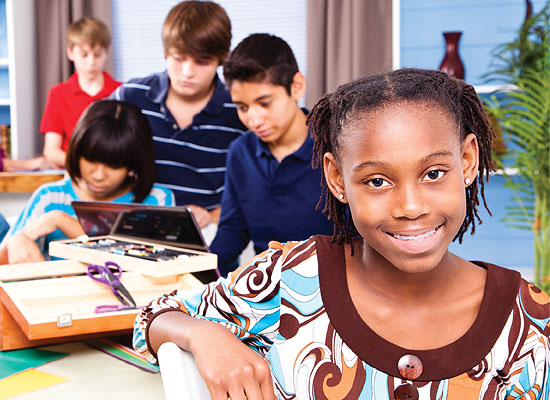Posters, buttons, rally speeches, and Robert’s Rules of Order have been mainstays of school-level politics for decades. Regardless of grade level, participation is limited to those students who are willing to campaign for positions that depend on the votes of peers or classmates. And, although student constituents promise to cast ballots for the most-qualified candidate, ultimately, popularity often rules.
How can we introduce all young adolescents to leadership opportunities and develop their leadership skills if only a chosen few are given the chance to learn social, collaborative, communication, and organizational skills?
In 2000, Konawaena Middle School (KMS) on the Big Island of Hawaii phased out traditional student government and developed a semester-long elective class: Student Leadership. The course curriculum was based on character education programming and was open to any seventh-or eighth-grade student interested in learning how to be a leader without having to win an election or garner popularity points.
A New Approach
Students, teachers, and community mentors embraced the new approach as students focused on service learning projects along with the traditional activities associated with student government. And, while initial opposition came from a handful of parents who feared their child’s high school leadership opportunities would be hindered by the lack of student government experience at the middle school level, naysayers soon realized the inclusive approach actually benefited a larger group of students as opposed to the minority previously served.
So how does Student Leadership mold future leaders for high school, post-secondary, and community involvement? The course has become synonymous with activities that promote responsibility, service learning, and school pride on the KMS campus, as supported by the General Learner Outcomes (GLOs)—supplemental goals incorporated into standards-based programming for all students within Hawaii’s public schools.
These character expectations are divided into six categories—Self-directed Learner, Community Contributor, Complex Thinker, Quality Producer, Effective Communicator, and Effective and Ethical User of Technology—and are incorporated across disciplines, grade levels, and school settings to ensure comprehensive programming.
By using the GLOs as goals for student leadership development, expectations become uniform for all students who want to serve in leadership roles around campus.
Student Leadership Activities
Student Leadership lessons include differentiating between role models, leaders, and heroes while identifying with distinguished individuals who share similar qualities and characteristics.
And, although students still paint banners for upcoming school-wide events and assemble goody bags for school spirit activities, they are constantly reminded of leadership attributes based on classroom discussions, decisions, and projects.
- The Leader in Me activity enables students to compare and contrast personal qualities and attributes with the accomplishments of notable leaders from various walks of life. From there, students set academic, personal, and philanthropic-type goals.
- Tolerance Targets focuses on individual, school, and community practices that may need improvement. Students ask peers, family members, and neighbors for their definition of tolerance as an ideal, behavior, and habit. Based on the interviews and class discussion, they begin to break down stereotypes and gain perspective.
- Public Speaking Pop-Ups empower students to tackle their fear of public speaking. Students present the morning announcements via the school’s closed circuit broadcast system, which allows them to communicate messages on a small stage—with no more than 8 peers in the room—yet reach the whole campus of 550+ listeners every morning.
Quarterly achievement and spirit assemblies allow more seasoned presenters to address live crowds from a stage. Other speaking opportunities include visiting feeder elementary schools as role models for future students; addressing parents at annual Open House events; and escorting guests around campus.
Stretching Their Wings
To prepare our graduates for success, schools must be willing to revamp or abandon old practices. Leadership skills are essential for adolescent learners, but the means to teach those skills need not look the same in every school.
Whether a school defines its leadership program as student council, student government, or student leadership is not the issue; rather, the focus should be on opportunities to instill ethics and values, which give as many learners as possible the opportunity to stretch their leadership wings.
Sandy Cameli teaches at Konawaena Middle School in Kealakekua, Hawaii. scamelis@aol.com
